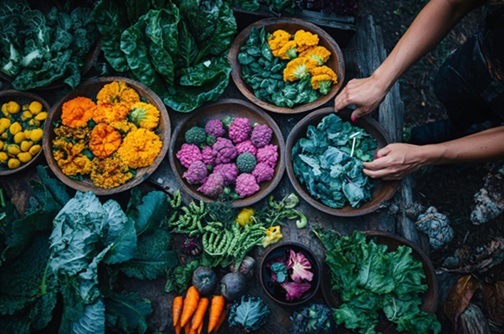Unique Crops to Elevate Your Garden
In the world of gardening, there’s a growing trend toward cultivating vegetables that stand out not only for their taste and nutritional value but also for their uniqueness. Exploring rare vegetable varieties offers gardeners the opportunity to elevate their gardens with crops that are both visually stunning and culturally significant. These unique vegetables not only add diversity to your garden but also help preserve biodiversity and introduce exciting new flavors to your table.
Why Grow Rare Vegetable Varieties?
Growing rare vegetable varieties can transform your garden from ordinary to extraordinary. These unusual plants often have unique flavors, colors, and shapes that you won’t find in typical grocery store produce. Beyond their aesthetic and culinary appeal, rare vegetables also play a critical role in preserving genetic diversity in our food systems.
The Appeal of Rare Vegetables
Rare vegetable varieties are often heirlooms or plants that have been cultivated for centuries in specific regions. They are valued for their resistance to local pests and diseases, as well as their ability to thrive in particular climates. By growing these varieties, you are not only reviving a piece of agricultural history but also contributing to the sustainability of our food system.
- Unique Flavors: Rare vegetables often have flavors that are richer or more complex than their common counterparts, making them a gourmet addition to your meals.
- Visual Appeal: Many rare varieties come in vibrant colors and unusual shapes that can make your garden truly stand out.
- Cultural Significance: Growing rare vegetables can connect you to the culinary traditions of different cultures and regions.
Top Rare Vegetable Varieties to Try in Your Garden
If you’re ready to start exploring rare vegetable varieties, here are some top choices that can elevate your garden and your dining experience. Each of these vegetables brings something special to the table, whether it’s an exotic appearance, a unique flavor, or a fascinating history.
Romanesco Broccoli: The Fractal Vegetable
Romanesco broccoli is a stunning vegetable that’s as much a work of art as it is a culinary delight. Known for its bright lime-green color and mesmerizing spiral patterns, Romanesco broccoli is a type of cauliflower with a nutty, slightly earthy flavor.
- Growing Tips:
- Sunlight: Romanesco broccoli thrives in full sun.
- Soil: It prefers well-drained, fertile soil rich in organic matter.
- Planting: Start seeds indoors 6-8 weeks before the last frost date, then transplant to the garden when the soil is warm.
- Culinary Uses: Romanesco can be roasted, steamed, or eaten raw in salads. Its unique texture makes it a standout in any dish.
Black Radish: A Bold, Spicy Root
Black radish is a variety of radish with a dark, almost black skin and a pungent, spicy flavor. It has been cultivated for centuries and is known for its hardy nature and long storage life. This ancient vegetable is not only versatile in the kitchen but also adds a dramatic contrast to any garden with its dark roots.
- Growing Tips:
- Sunlight: Black radishes grow best in full sun but can tolerate partial shade.
- Soil: They prefer loose, well-drained soil with plenty of organic matter.
- Planting: Direct sow seeds in the garden in early spring or late summer for a fall harvest.
- Culinary Uses: Black radishes can be eaten raw, pickled, or cooked. Their spicy flavor pairs well with creamy cheeses or can add a kick to salads.
Oca: The Andean Delight
Oca, also known as New Zealand yam, is a tuber native to the Andes and widely grown in South America. It’s a small, colorful tuber that comes in various shades of red, orange, and yellow, with a tangy, slightly lemony flavor that becomes sweeter when cooked.
- Growing Tips:
- Sunlight: Oca prefers full sun but can tolerate some shade.
- Soil: Plant in rich, well-drained soil. Oca thrives in cooler climates.
- Planting: Plant tubers in spring after the last frost and harvest in late fall after the foliage dies back.
- Culinary Uses: Oca can be boiled, roasted, or fried. It’s often used in soups, stews, or as a substitute for potatoes.
Dragon’s Tongue Beans: A Striking Legume
Dragon’s Tongue beans are a striking variety of bush bean with cream-colored pods streaked with purple. This Dutch heirloom is not only visually appealing but also has a sweet, tender flavor when harvested young.
- Growing Tips:
- Sunlight: Dragon’s Tongue beans require full sun.
- Soil: Plant in well-drained, fertile soil.
- Planting: Sow seeds directly in the garden after the last frost date.
- Culinary Uses: These beans are best when harvested young and can be eaten raw, steamed, or sautéed. The purple streaks disappear when cooked, revealing a creamy, tender pod.
Purple Carrots: A Colorful Twist on a Classic
While most of us are familiar with orange carrots, purple carrots are an ancient variety that dates back to the origins of carrot cultivation. These carrots have a deep purple skin and a sweet, earthy flavor. They’re also packed with antioxidants, making them a nutritious addition to your garden.
- Growing Tips:
- Sunlight: Carrots need full sun for best growth.
- Soil: Loose, sandy soil is ideal for growing straight, smooth roots.
- Planting: Direct sow seeds in early spring or late summer for a fall harvest.
- Culinary Uses: Purple carrots can be used just like their orange counterparts. They add a vibrant color to salads, soups, and roasted vegetable dishes.
How to Source and Grow Rare Vegetables
Finding and growing rare vegetable varieties requires a bit more effort than growing standard crops, but the rewards are well worth it. Here’s how to get started.
Sourcing Rare Seeds
The first step in exploring rare vegetable varieties is sourcing seeds. Many rare varieties aren’t available at local garden centers, so you may need to seek out specialized seed suppliers or participate in seed exchanges.
- Specialty Seed Suppliers: Look for companies that specialize in heirloom and rare seeds. Reputable sources include Baker Creek Heirloom Seeds, Seed Savers Exchange, and Native Seeds/SEARCH.
- Seed Exchanges: Join gardening groups or online communities where members exchange rare seeds. This is a great way to access unique varieties and connect with other passionate gardeners.
- Local Farmers Markets: Some local farmers may sell rare or heirloom seeds that are well-suited to your region’s climate.
Preparing Your Garden for Rare Varieties
Once you have your seeds, preparing your garden to accommodate these rare varieties is crucial. Many rare vegetables have specific soil, light, and climate requirements, so it’s important to understand the needs of each variety.
- Soil Preparation: Ensure your soil is rich in organic matter and well-drained. Amend with compost or other organic materials to improve fertility and structure.
- Climate Considerations: Some rare vegetables, like oca or Romanesco broccoli, have specific climate requirements. Be sure to choose varieties that will thrive in your region’s growing conditions.
- Companion Planting: Consider companion planting to maximize the growth and health of your rare vegetables. For example, planting marigolds near Romanesco broccoli can help deter pests.
Tips for Growing and Harvesting Rare Vegetables
Growing rare vegetables can be a rewarding experience, but it requires careful attention to detail. Here are some tips to ensure a successful harvest.
Start with the Right Soil
The foundation of any successful garden is healthy soil. This is especially true for rare vegetable varieties, which may have specific nutrient needs. Conduct a soil test to determine the pH and nutrient levels in your garden, and amend accordingly.
- Soil Testing: Use a soil test kit to check your soil’s pH and nutrient levels. Most vegetables prefer a slightly acidic to neutral pH (6.0-7.0).
- Amendments: Add compost, manure, or other organic matter to improve soil fertility. Some rare varieties may benefit from specific amendments, such as lime for raising soil pH or sulfur for lowering it.
Understand Watering Needs
Watering requirements can vary significantly between different rare vegetable varieties. Some, like oca, prefer consistent moisture, while others, like black radish, are more drought-tolerant.
- Consistent Watering: For varieties that need consistent moisture, consider using drip irrigation or soaker hoses to deliver water directly to the roots.
- Mulching: Apply mulch around your plants to retain soil moisture and regulate temperature, which is particularly important for cool-season crops like Romanesco broccoli.
Harvesting Rare Vegetables
Harvesting at the right time is crucial for enjoying the full flavor and nutritional benefits of your rare vegetables. Each variety has its own ideal harvest time, so be sure to research the specifics for each plant.
- Timing: Harvest root vegetables like black radishes and purple carrots when they reach the desired size. Leafy vegetables and beans should be harvested while tender and young.
- Post-Harvest Care: Store your rare vegetables properly to extend their shelf life. For example, root vegetables can be stored in a cool, dark place, while beans are best stored in the refrigerator.
Conclusion: Elevate Your Garden with Rare Vegetables
Exploring rare vegetable varieties can transform your garden into a unique, vibrant, and sustainable space. By growing these uncommon crops, you’re not only adding variety to your meals but also contributing to the preservation of our agricultural heritage. Ready to start growing? Begin by selecting a few rare varieties that intrigue you, source high-quality seeds, and prepare your garden for a season of discovery and delight.
Discover more with The Year-Round Vegetable Garden for Beginners!


Leave a Reply